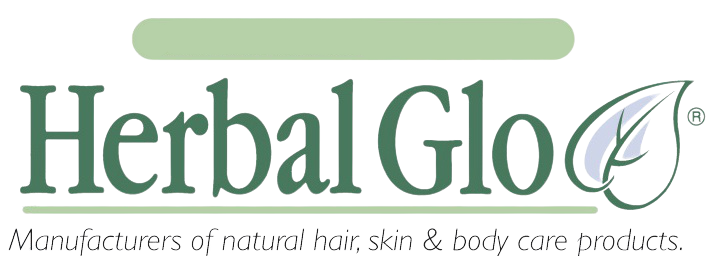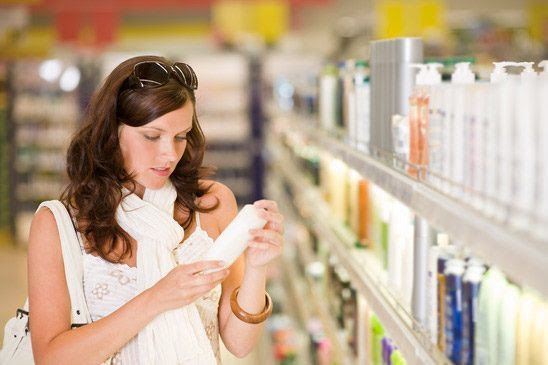Hair
What are Parabens and What Are They Used For?

One such chemical that get’s quite a bit of attention (and has done for some time) are Parabens, which are believed to be an ingredient in over 75% of all cosmetic products. In this article we’ll take a closer look at Paraben free shampoo and cosmetics and provide you the information from both sides to help you make an informed choice on whether you should be using a Paraben free alternative.
You will no doubt have seen Paraben free labeling on many cosmetic products, most commonly shampoos, but are they dangerous? Should you be as concerned as you might be over Sulfates?
A lot of manufacturers have introduced a Paraben free line or even gone completely Paraben free. Don’t be fooled into thinking this is evidence that they are dangerous however, this is merely a reaction to consumer concern. In reality the perceived truth is just as damaging as the actual truth for shampoo manufacturers when it comes to sales. As a result shampoo and skin care companies have mostly fallen into line, even though many remain unconvinced Parabens are an issue at all.
There are a number of Parabens you might find on your shampoo label including:
- Methylparaben
- Propylparaben
- Ethylparaben
- Propylparaben
- Butylparaben
- Isobutylparaben
Parabens are essentially another word for preservatives. Preservatives are required for shampoos or any organic substance that is required to have a shelf life, e.g. how long a particular product remains acceptable to use under normal conditions.
This is because most of the ingredients that make up shampoos are subject to decomposition unless a preservative is used. Parabens have Antibacterial andAntifung
Another example of a preservative is salt, which has been used since the earliest of times due to it’s ability to absorb water which makes for an environment unlikely to allow Bacteria and Fungi to develop.
 While Parabens can be man-made (synthetic) they can also be found in nature and have been identified in the following:
While Parabens can be man-made (synthetic) they can also be found in nature and have been identified in the following:
- Soy
- Cucumber
- Carrot
- Berries
- Cherries
- Olives
- Strawberries
Plants benefit from Parabens in exactly the same way the products we add them to do. They help plants defend themselves against Fungi and Bacteria. Generally the level of Parabens found in plants are very low e.g. less than .005%.
Which Products Contain Them?
Parabens are generally associated with cosmetics and are commonly found in the following:
- Shampoos
- Skin care Products e.g. moisturisers
- Toothpaste
- Shaving Cream
- Shower Gels
- Make up e.g. Mascara
- Sunscreens
- Deodorants and Antiperspirants
The use of Parabens in shampoos is nothing new, in fact Parabens have been included in shampoo since the early 1900’s. They are the most common form of preservative for shampoo and skin care products. Parabens are extremely common in the cosmetics industry.
Are they Dangerous? Should we all be using a Paraben Free Shampoo?
There is debate surrounding the use of Parabens in cosmetics, particularly concerning the suspicion of it’s ability to mimic Estrogen (also spelt Oestrogen). Estrogen is linked to breast cancer due to it’s ability to stimulate breast cell division and secondly it’s ability to interact with other hormones that are believed to promote cell division.
The Cancer debate began in 2004 when researchers discovered evidence of Parabens in breast cancer samples. You can read the official report here: https://www.ncbi.nlm.nih.
Molecular biologist Philippa Darbre (lead researcher) was quoted as saying “the ester-bearing form of the Parabens found in the tumors indicate that they came from something applied to the skin, such as an underarm deodorant, cream or body spray” she then went on to say “that the results helped to explain why up to 60% of all breast tumors are found in just one-fifth of the breast – the upper-outer quadrant, nearest the underarm.”
You can see an interview with Philippa Darbre below in where she discusses her findings.
This is pretty powerful stuff, except for the fact that the both the FDA (Food and Drug Administration) and American Cancer Society both have issues with the findings. You can read the official stance on Parabens from the FDA here: https://www.fda.gov/
The American Cancer Society have also put out information that can be found here: https://www.cancer.org/
The American Cancer Society questions why non-cancer tissue wasn’t also tested and they also point to the fact that just because Parabens were detected doesn’t mean they play any role in the development of Breast Cancer. In addition, they make the case that high Estrogen levels in the body have a much higher risk of causing Cancer.
Still unsure? It’s hardly surprising. Below are the commonly accepted arguments for and against the perceived dangers.
The argument against
- It’s widely accepted that there is no scientific link between Parabens and Cancer. There has been research carried out in one form or another for more than 20 years without any hard proof
- The FDA (Food and Drug Administration), American Cancer Council and WHO (World Health Organisation) both believe Parabens are relatively safe in low levels (e.g. below 25%)
- The Cosmetic Ingredients Review found they are only a problem if the level exceeds 25% (in most cases levels are below 1%)
- While the one study that did find Parabens in breast cancer tissue has caused much of the controversy, this was a small sample size and unaffected tissue wasn’t tested to see if it also contained Parabens
- A 2005 study found “it is biologically implausible that parabens could increase the risk of any Estrogen-mediated endpoint, including breast cancer” It goes on to say “worst-case daily exposure to parabens would present substantially less risk relative to exposure to naturally occurring endocrine active chemicals in the diet”
- Parabens are merely used for preserving rather than playing a foundational role such as Sodium Lauryl Sulfate does with producing lather. As a result it’s rarely used in levels higher than 1%
The argument for
- Researchers discovered evidence of Parabens in 20 different breast cancer samples when testing
- There is evidence to suggest it can mimic Estrogen which can be linked to breast cancer and early puberty in girls.
- While nothing has been proven as far as a link to Cancer, there is no concrete proof it isn’t a concern. This leaves many to fear the unknown and with good reason. Asbestos, tobacco anyone?
- The EPA (Environmental Protection Agency) link some Parabens (Methylparaben) to Cancer and other health related issues such as developmental and hormonal issues
- It’s impossible to accurately test for all humans and all environments. What makes one person sick may not necessarily affect another
The Undisputed Facts
- Parabens are non toxic and wont affect sensitive skin in the way some Sulfates such as Sodium Lauryl Sulfate can unless the patient has a known allergy.
- If an allergy exists Parabens can contribute to a number of known skin conditions such as Dermitis
While the ‘argument against Parabens being harmful ‘ is stronger, it’s important to remember those that are suspicious of Parabens don’t necessarily require evidence that prove it’s a health concern. The fact that any doubt exists is enough to concern many consumers. It’s a trust issue and many of us don’t trust the cosmetics industry.









